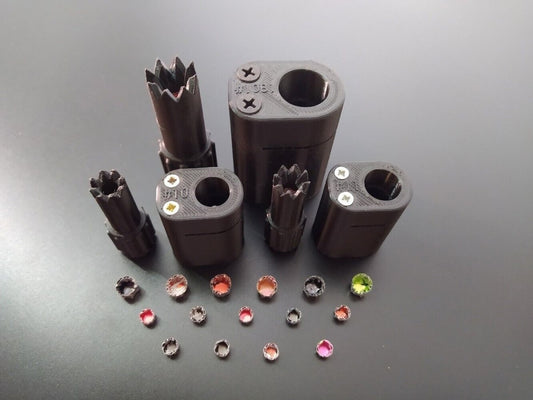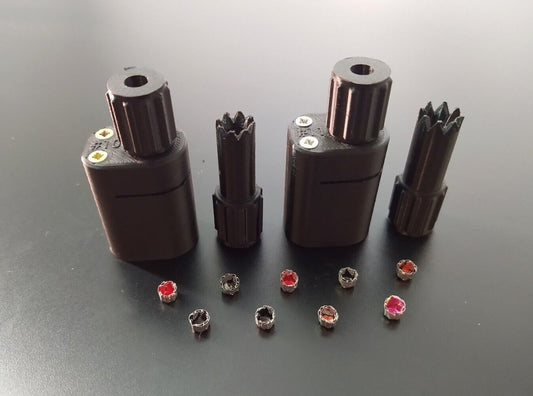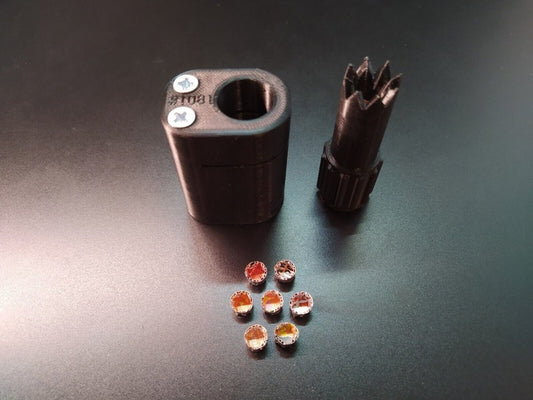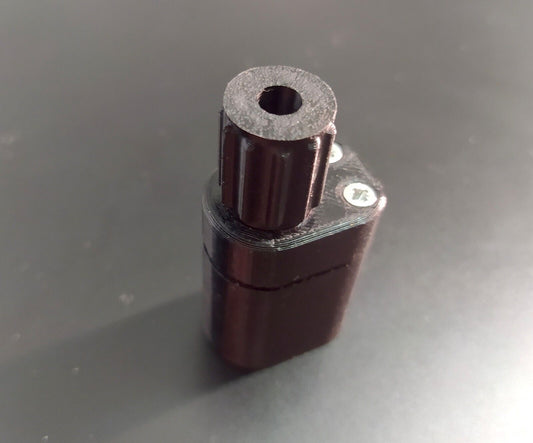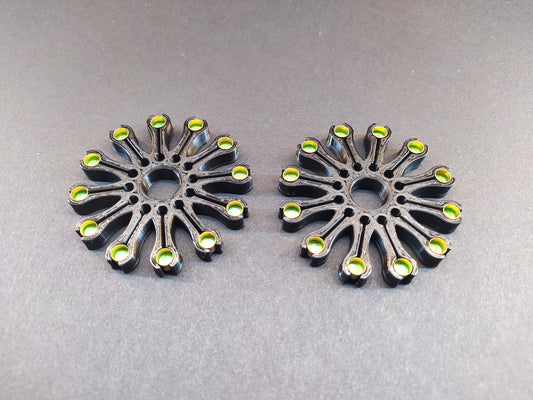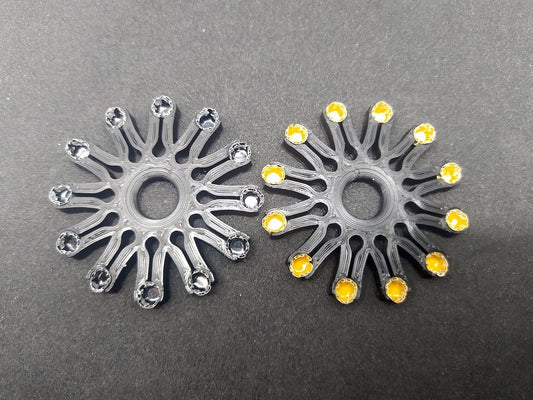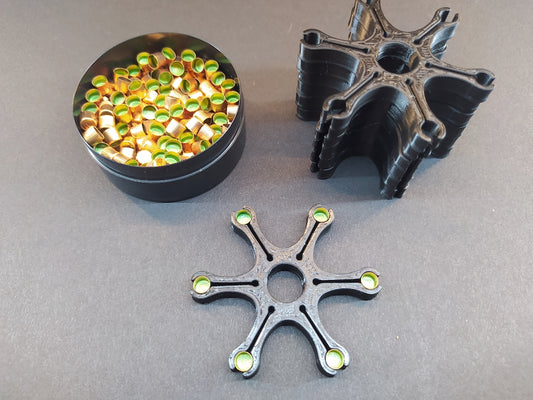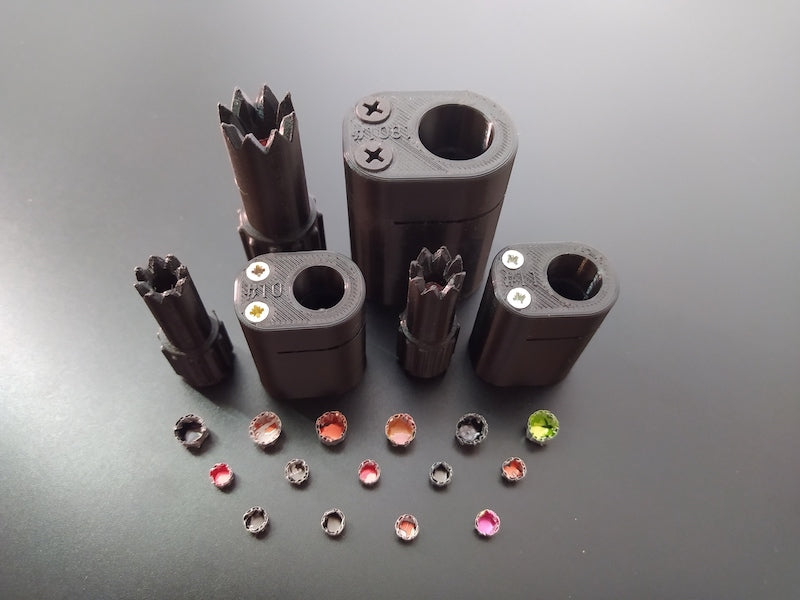
Your One-Stop Shop for Black Powder Muzzleloader Accessories
SHOP NOWElevate Your Shooting Experience: Embrace the Precision of our Percussion Cap Maker, Paper Cartridge Former and Paper Cartridge Kits from Our Collection!
On Sale Now! Attention, all shooting enthusiasts! Don't miss this fantastic opportunity to level up your shooting skills with our exclusive sale on the Black Powder Paper Cartridge Making Kit and Percussion Cap Maker Kit!
Discover a new level of shooting precision with our exceptional collection of black powder shooting kit. Elevate your shooting experience with our top-notch Percussion Cap Maker, Paper Cartridge Former, and Paper Cartridge Kits. Embrace the convenience and accuracy that these high-quality tools offer, ensuring seamless performance every time you take aim. Upgrade your shooting gear and unleash your full potential on the range or in the field with our precision-crafted products. Don't miss out on the opportunity to enhance your skills – explore our collection now!
-
#10 & #11 & #1081 Percussion Cap Maker Kit
Regular price $54.99 USDRegular priceUnit price / per -
#10 Percussion Cap Maker
Regular price $20.99 USDRegular priceUnit price / per -
#10 Percussion Cap Maker Kit and #11 Percussion Cap Maker Kit
Regular price $38.99 USDRegular priceUnit price / per -
#1081 Percussion Cap Maker
Regular price $36.99 USDRegular priceUnit price / per -
#11 Percussion Cap Maker
Regular price $20.99 USDRegular priceUnit price / per -
12-Cap Capper Star Tool (2pcs) for #10 and #11 factory caps
Regular price $13.99 USDRegular priceUnit price / per -
12-Cap Capper Star Tool (2pcs) for #10 and #11 homemade caps.
Regular price $13.99 USDRegular priceUnit price / per -
6-Cap Capper Star Tool (7pcs) - Suitable for #10 and #11 factory Caps
Regular price $15.99 USDRegular priceUnit price / per
Unlock the Ultimate Shooting Experience: Buy Your Premium Muzzleloader Accessories Kit from Our Store Today!
While you can find our exceptional muzzleloader accessories kit, such as the percussion cap maker or paper cartridge former for sale on eBay or Etsy, we genuinely recommend purchasing it directly from our official store right here. By doing so, you'll steer clear of unnecessary 20% marketplace charges and enjoy the same outstanding service you'd expect from us.
Choosing to buy from our official store comes with added perks. As our valued store customer, you'll be privy to exclusive benefits that no other platform can offer. Experience dedicated customer support, prompt shipping, and expert guidance to make the most of your black powder shooting gear.
People also ask
Why is there a percussion cap shortage?
There has been an increased demand for modern centerfire cartridges and primers, leading to a shortage of percussion caps. Ammunition manufacturers have been working diligently to meet the high demand for centerfire ammunition, causing percussion caps to receive less production time due to their smaller share in the market. As a result, shooters and enthusiasts using muzzleloading firearms or participating in historical reenactments might experience challenges in finding available percussion caps during this period.
Can I make my own dummy percussion caps?
Yes, you can make your own dummy percussion caps, and it is generally safer than attempting to make live ones. Dummy percussion caps are non-functional replicas that do not contain explosive material and are commonly used for training, demonstrations, or historical reenactments. These dummy caps can be used to simulate the loading and firing of a percussion-based firearm without the risk associated with live ammunition.
What are no 10 percussion caps used for?
No. 10 percussion caps are commonly used for small-caliber muzzleloading firearms. They are specifically designed to fit on the nipple of percussion cap muzzleloaders and are used to ignite the black powder charge inside the firearm's barrel.
These caps are slightly smaller than the more widely known No. 11 percussion caps. They are typically used for smaller caliber firearms.
What are no 11 percussion caps used for?
Historically, No. 11 percussion caps were commonly used in various firearms, including pistols, revolvers, muskets, and rifles, during the mid-19th century and beyond. Today, they are still used in black powder shooting, historical reenactments, and for those who enjoy traditional shooting sports with muzzleloading firearms.
What are no 1081 musket percussion caps used for?
During the Civil War, musket percussion caps, played a pivotal role in firearms technology. These caps served as the ignition source for gunpowder, replacing earlier flintlock systems. Positioned on top of a percussion nipple, a small tube extending from the breech of the firearm, the musket cap was struck by a hammer when the trigger was pulled, igniting the gunpowder and firing the weapon. This innovation significantly improved reliability and speed compared to previous ignition methods. Musket caps found extensive use in Civil War-era firearms, including muskets, rifles, and pistols, contributing to the evolution of modern weaponry.
How did they make percussion caps?
Historically, percussion caps were manufactured through a careful process involving several steps. Thin discs of brass or copper were cut into the desired size and shape to form the base of the percussion cap. These discs were then stamped or drawn into small cups. The cups were filled with the priming compound, fulminate of mercury. Once the cups were filled with the priming compound, they were sealed with a thin layer of varnish or lacquer. The sealed percussion caps were left to dry and harden.

